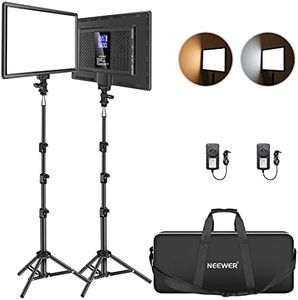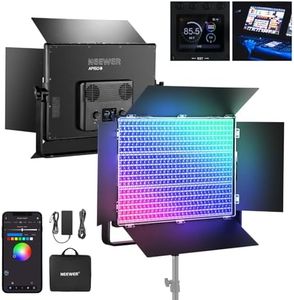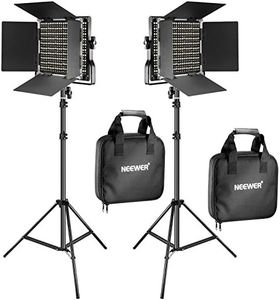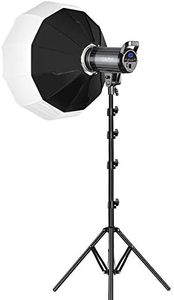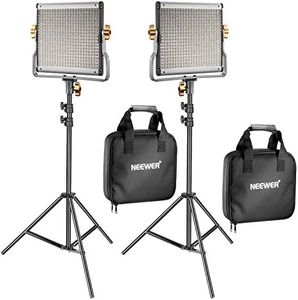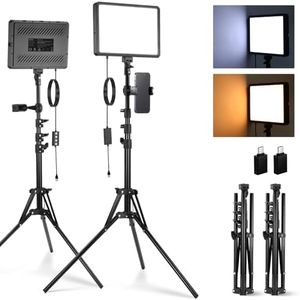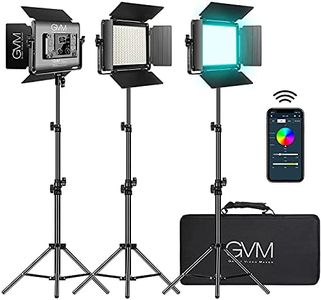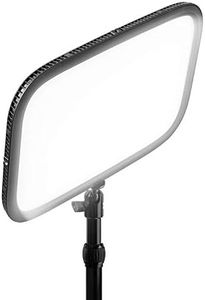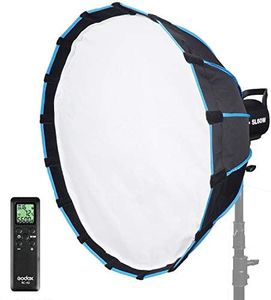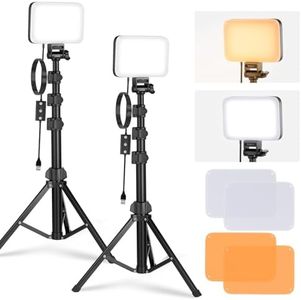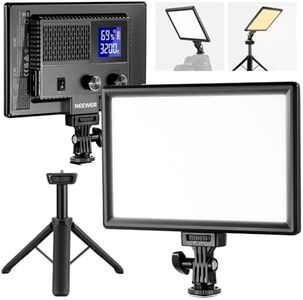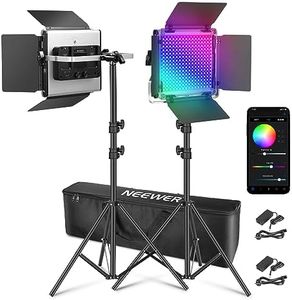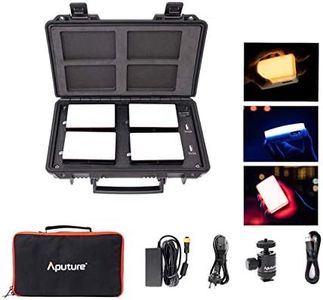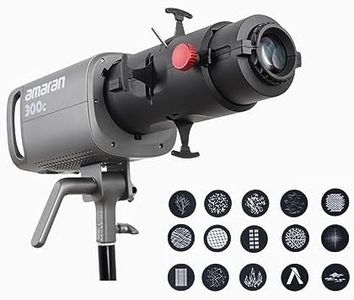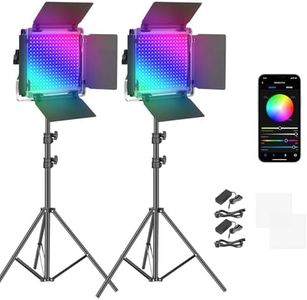We Use CookiesWe use cookies to enhance the security, performance,
functionality and for analytical and promotional activities. By continuing to browse this site you
are agreeing to our privacy policy
10 Best Pro Video Lighting Kit
From leading brands and best sellers available on the web.Buying Guide for the Best Pro Video Lighting Kit
Choosing the right pro-video lighting kit can make a significant difference in the quality of your videos. Good lighting can turn an average scene into a professional-looking production, highlighting your subjects and setting the mood. Before buying, think about the kind of videos you make, the spaces where you’ll be filming, and how portable or flexible you need your lighting to be. Understanding the key specifications will help you find a kit that perfectly matches your shooting style and production needs.Light Type (LED, Fluorescent, Tungsten)The type of light refers to the kind of bulb or panel technology used. LED lights are energy efficient, stay cool, and are popular due to their long life and flexibility. Fluorescent lights provide soft, even lighting but can be bulkier. Tungsten lights offer classic, strong output but get hot and use more power. If you often shoot on location or need easy portability, LED is a strong choice. For studio setups wanting natural-looking, continuous soft light, fluorescents or tungsten may be worth considering. Your filming environment and length of shoots can guide your decision.
Color TemperatureColor temperature describes whether the light is warm (yellowish) or cool (bluish), measured in kelvins (K). Most video lights range from about 2700K (warm, like indoor lamps) to 5600K (daylight). Lights with adjustable color temperature (bi-color) offer flexibility so you can match your lighting to ambient or outdoor light. Think about where you shoot most often: if you’re mixing with daylight, a 5600K or adjustable light is helpful. For indoor or moody scenes, warmer temperatures might fit better.
Brightness (Lumen Output)Brightness shows how much light the kit puts out, usually measured in lumens or lux. Higher numbers mean more light, which is good for larger spaces or if you need to shoot subjects further from the light. Some lights have adjustable brightness, letting you control the output for different creative needs. Consider the size of your set and how much control you want over shadows and highlights—higher brightness offers more versatility, but might be overkill for small rooms or close-up work.
Light Modification Options (Softboxes, Umbrellas, Diffusers)Light modifiers shape and soften the light, reducing harsh shadows. Softboxes and umbrellas create wide, flattering light, while diffusers can soften output from a hard light. Some kits come with modifiers included, while others require you to buy them separately. If you want natural, flattering lighting, pick a kit that includes or supports softboxes or umbrellas. For run-and-gun or documentary-style shoots, you may want lighter, more compact modifiers.
Portability and Power SourcePortability relates to how easy it is to move and set up the kit, and the power source covers whether you can plug the lights into mains power or use batteries. Battery-powered lights are handy for outdoor or location shooting where outlets are scarce, while corded options work well for studios. If you shoot in varying locations or need regular setup and teardown, look for kits that are lightweight and have battery options; for fixed studio use, size and battery support matter less.
CRI (Color Rendering Index)CRI measures how accurately the light shows true colors, on a scale from 0 to 100. Lights with a high CRI (90 or above) produce more natural and vibrant colors, crucial for professional video where color accuracy matters. If you shoot products, people, or scenes where color fidelity is important, prioritize a high CRI. For casual or non-color-critical projects, a slightly lower CRI might be acceptable.
